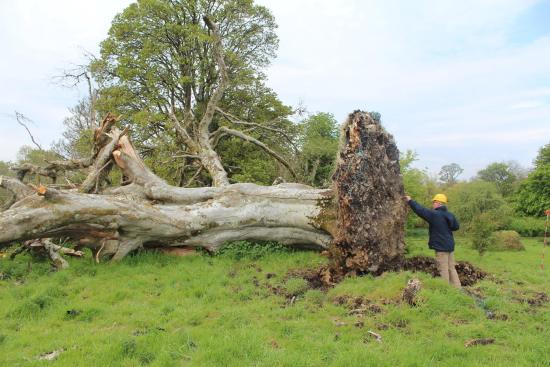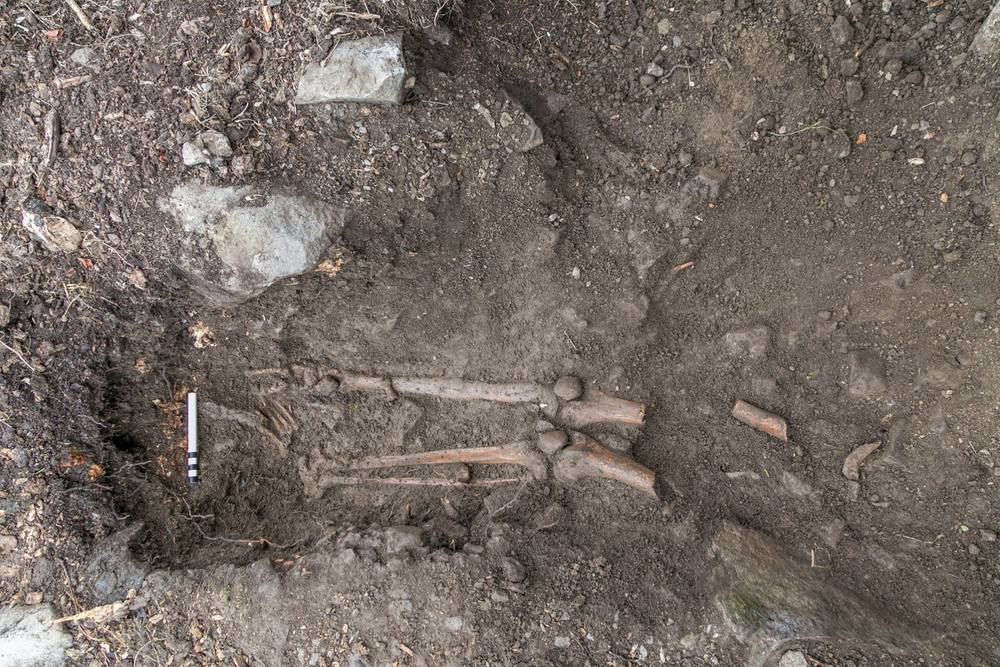Medieval Skeleton Discovered After Irish Tree Falls
/
Most weeks this story would be considered firmly based in the past, but compared to our last story concerning possibly three million year old skeletal remains, this archeological find is practically modern. Last week a story appeared on media outlets detailing a 215 year-old beech tree felled by a storm last May in the town of Collooney on the northwest coast of Ireland. Not such a remarkable story (although a shame to lose such an old tree), except for the fact that when the tree uprooted, it revealed a 1,000 year old skeleton beneath. Even stranger, when the tree fell, it ripped the skeleton in half, leaving the lower body still in ground, while the upper body and skull remained wrapped in the roots.
Ireland’s National Monument Service hired the newly formed Slig-Leitrim Archaeological Services to excavate and date the remains as their very first project. Archeologists from Slig-Leitrim determined the remains belonged to a young Gaelic man between the ages of 17 and 20 who died a violent death—sharp force kerf marks were found on the hands and ribs, likely from a sword or knife. While the hand wounds certainly indicate the young man attempted to defend himself, it’s unclear at this time whether he was murdered or died in battle. What is clear from the grave, however, is that it was a formal Christian burial. While there don’t appear to be any other remains in the vicinity, historical records of the area indicate there might have been a church and graveyard in that area long ago.
 A human spine tangled in the roots of a felled beech tree.
A human spine tangled in the roots of a felled beech tree.
Radiocarbon (C-14) dating places the bones between 1030 and 1200 A.D., so the young man was buried more than 800 years before the tree sprouted. As the tree grew, the remains of the man’s upper body were ensnared in the roots, so when the tree blew over centuries later, the bones of the upper body were raised into the air, leaving the legs below, still embedded in the ground.
 The lower legs and feet still in the ground.
The lower legs and feet still in the ground.
Further analyses of the remains are ongoing, but, once complete, the skeleton will be sent to the National Museum of Ireland, Dublin to be added to their collection.
Photo credit: Thorsten Kahlert



 2.1%
2.1%